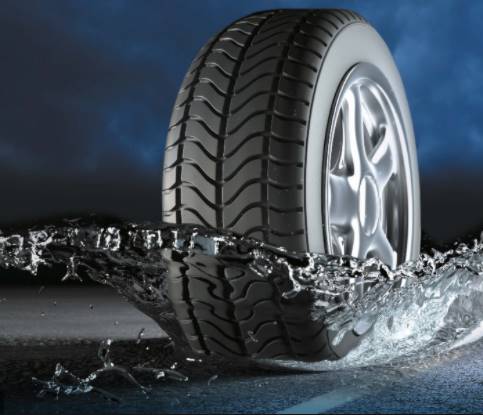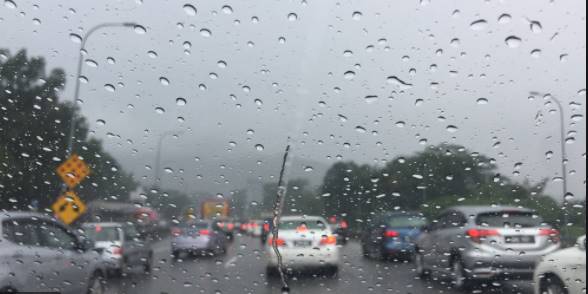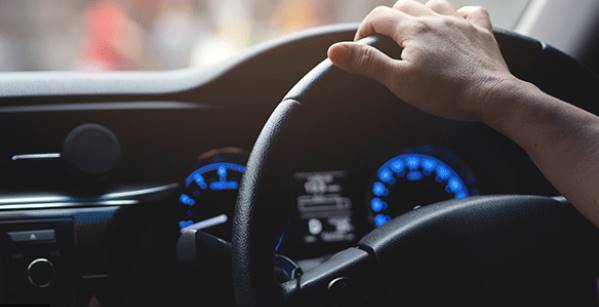Driving tips: Safety in the rain
Some of us love it…some of us can do without it.
The best thing you can do is wait for the rain to either simmer down or completely come to a stop before you can get behind the wheel.
However, if you do not have the time to wait, here are some very helpful checks and tips to keep you safe while driving on wet or flooded roads.
The Four Most Important Checks To Do Before Driving In The Rain.
Tyres:
The importance of your tyres multiplies when you decide to drive in the rain. You have to ensure that your tyres are capable of keeping you on the road at all times.
This means that you have to check that your tyres have enough tread to keep you safe – even though you might be driving at a lower speed than normal.
One way to see if you have enough tread is to stick a R5 coin into the tread and if you cannot see the gold ring, your tyres are fine. If you can see the gold ring, it’s time to invest in a set of new tyres.
Check the recommended air pressure listed in the manual and maintain it before you leave for your destination.

Wipers:
Your car’s windshield wipers go into full gear when the rainy season arrive so it is important that they are functioning properly.
Some car models also come with a wiper for the rear windshield as well – so check if that is working as well.
The washers that spray water and cleaning liquid onto your windshield can often get clogged with dirt and you should clean that out before leaving. If your wipers are not cleaning properly or need to be replaced.

Lights:
Although light travels through water quite easily, heavy rains make it very difficult to see what’s in front of you.
Now add the complication of driving to that scenario and you could find yourself in a very dangerous situation.
So, always check if your lights are in proper working condition before you start driving. Switch on your headlights, taillights, brake lights and fog lights to ensure that they all work.

Air-Conditioner:
While the AC is extremely helpful during the scorching Indian summer, it can also be crucial during the monsoon.
You are most likely to drive your vehicle with the windows rolled up during heavy rainfall which reduced air circulation inside the cabin.
The difference in pressure and temperature from inside and outside causes the windows and windshields to fog up.
A fogged-up windshield can be very dangerous for driving as we all know. Turning on the AC and keeping it at the same temperature outside ensures that the windows do not fog up.

Five Safety Tips For Driving In The Rain.
Keep Your Distance
This is probably one of the most obvious but most important tips to drive safely in the rain.
We all know that the rain makes driving quite difficult but what’s tougher is getting the car to stop quickly. Because the moisture on the road makes it hard for the tyres to get any grip, you should always keep a good amount of distance between your car and the vehicle in front of you.
Slowing down and coming to a complete stop takes a little more time than usual so you have to take that into consideration when driving in the rain.

Always Drive Slowly
No matter how new your tyres are or how experienced a driver you consider yourself, there is no predicting what your car is going to do in wet conditions.
Not only do the rainy season bring lower visibility, but they also introduce drivers to hydroplaning.
Hydroplaning is when a very thin film of water forms between the road and your tyres which causes the car to skid. This usually happens when the vehicle is moving at higher speeds as the tread on the tyres don’t have enough time to dig into the surface of the road.
That is why it is best to drive at lower speeds than usual. This also help you control the car better if the vehicle in front of you slows down.

Try And Stay In The Middle
Roads are designed with drains on the sides so that excess build-up of rain or water can be quickly removed.
On some roads however, those drains are usually clogged and not functioning in the way they were planned.
This means that large amounts of water usually collect on the sides of the roads rather than the middle. So, if you want to drive safer during the monsoon, you should choose to drive somewhere near the centre of the road.
When you drive on the sides, you not only take the risk of driving into large potholes and flooding the engine, but other cars could quite easily splash water onto your car and windshield making it very difficult to see what’s ahead of you.

Going Through A Puddle
If you have no other choice (and you probably won’t), given the amount of potholes you can find on the roads, and you have to drive into and through a puddle, it is best to take it very slow.
You should try to guesstimate the depth of the puddle by watching the water surrounding it.
If there are other vehicles driving through the puddle, watch how they do it and follow along. If you are familiar with the pothole and know that the puddle is deeper than you would like to drive into, it is best to avoid it completely.
The best way to judge is to see if the water in the puddle is above the level of the door sills. If it isn’t, and you decide to go through it, always keep your foot on the accelerator gently so that water does not enter through the car’s exhaust pipe.

Make Yourself Visible
Visibility, or the lack of it, is one of the main causes for accidents when driving in the rain.
The drivers of large vehicles such as trucks find it very hard to see smaller vehicles, even if they are just a few meters away.
Heavy rains turn everything into a grey-coloured mass and if a vehicle is coloured similarly, they become invisible until it’s too late.
This is why it is extremely important to have all your lights on while driving – headlights, front fog lights, rear fog lights (if you have them), DRLs, and even taillights.
You should make yourself visible to other vehicles around you so that they can see when you’re about to change lanes or make a turn or stop.
However, you should avoid using the high-beam as it blinds drivers in front of you and put them in danger.

Visit our website: VAGSPEC CENTRE RANDBURG
Visit us on Facebook: Vagspeccentre VW and Audi Specialist
Our branches: VAGSPEC BRANCHES








